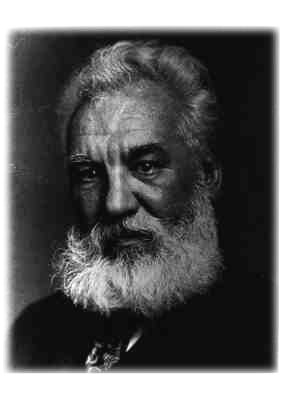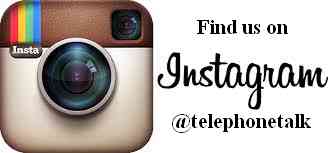Some history of the telephone ...
In 1876 Professor Alexander Graham Bell's assistant Mr Watson heard speech transmitted by a telephone for the first time. It was Professor Bell shouting in a microphone in another room. He had spilt acid on his trousers and was shouting for help. The trousers were quickly forgotten, for the sensational thing was that Mr Watson had heard the shout through a microphone, wire and receiver. This is the principle called telephony.
This historical model was produced by the Bell Telephone Laboratories in 1975 to commemorate the invention's centenary
Others were doing similar experiments at the same time, but Bell was the first to take out a patent on the telephone. Conversations could now be conducted long-distance, just as written messages could already be sent by telegraph. Distinguished magazines wrote that it might be an amusing play-thing for private individuals, but there was no future for telephony
My own collection ...
One corner of my "Phone Room" which is now getting more than a bit cramped. The same picture originally was to be the front cover of my new book. My graphics designer convinced me that my draft cover is too busy and her design would appeal to a wider audience. It took me a while, but I finally had to bow to an expert opinion. see her design here.

- Ericsson Telephones
-
I have a reasonable collection of Ericsson antique telephones. This can be a very rewarding specialty for the collector - the downside is that they are becoming increasingly difficult to find and therefore costly. On the plus side, if you buy genuine articles from a reputable seller, you can almost guarantee that your purchase will give much pleasure and also be a positive investment.
- Telephones from other European countries
-
I have more recently developed an interest in European telephones, particularly French and German.
The French telephones have a very distinctive style and their manufacturing techniques were very different to those in other countries. I am told that this was to avoid (Bell) patent infringements. Early French wall and table telephones also typically included a second listening piece (for Mother-in Law they say), and this continued even up to the 1980's
- Telephones used in Australia
-
Some of the earliest telephones in Australia were imported from the US (Western Electric) and Sweden (LM Ericsson). These usually were wall mounted and of timber construction with separate boxes for batteries and the other components.
-
Ericsson wall telephones became the predominant model for a long time. The wall telephone was followed by the manufacture of a table model in 1892. This model was a very successful merger of aesthetics and design ergonomics - so much so that it became the LME trademark for many years and was blatantly copied by other manufacturers all over the world. They say that the greatest compliment one can receive is to be copied !!
-
The ornate Ericsson telephones were gradually replaced by a cheaper single plain box type. These were mainly manufactured by British Ericsson, British General Electric and other US companies. These telephones typically had the transmitter fitted to the front, with a "bell" shaped receiver hanging on the left side and a writing slope on the front of the box. Some telephone exchanges became "automatic" from about the early 1920's and the box telephones were modified by fitting a dial to the front. The box type telephones became much smaller when technology improved and batteries were no longer required in the phone itself.
-
In the 1930's the bakelite case and handset were first produced and this was the beginning of the "plastic" style phones. Bakelite is a material which is quite toxic in its manufacture and in the early 1960's the first of the lightweight plastic telephones were produced.
-
This then lead to the ability to manufacture a wider range of colours and styles. These were eventually manufactured in Australia by AWA and STC
-
We now have little telephone manufacturing in Australia, with a large share being manufactured in Asian countries
- Miscellaneous
-
Switchboards too, followed a similar development path with early instruments being very heavy, timber construction. Eventually replaced by plastics with stored program logic replacing electromechanical components
- Cute or Cuddly
-
There is a huge range of decorator and novelty telephones available to suit all design tastes and special interests - from Star Wars to Disney characters to Corvette cars. Some of these which were produced in limited numbers have become quite collectible.














